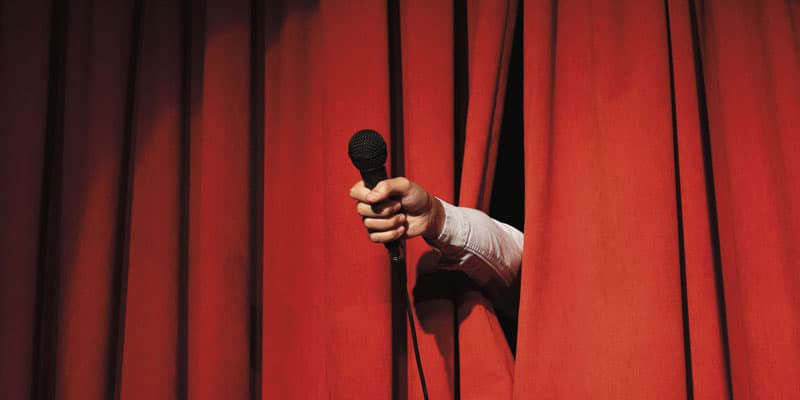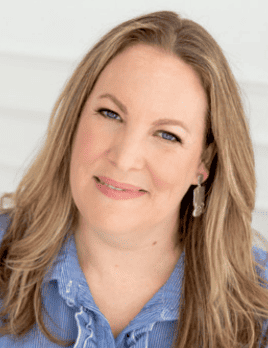Emma Cooksey says that trying something new and combining therapies can provide a more efficient treatment plan for sleep apnea patients.

by Emma Cooksey
About ten years ago I spent a few years at home with small kids and felt like I needed to break out of my predictable routine. I read an article about the growth of improv comedy classes and how adults were signing up for classes to try something new, meet new friends and face their fears. I was all in!
What is there to fear about improv comedy? How about standing in front of an audience without a script or any idea of what your fellow improv-ers are about to roll out? Fortunately, it doesn’t start there. I began with weekly classes trying out lots of exercises with one underlying principle: The unifying mantra running through all improv is the simple phrase “Yes, and”. This phrase encapsulates the idea that you must first accept whatever your scene partner throws out and then build upon it. You aren’t competing with your fellow improv partners; you’re working together to build the best possible scene.
What does any of this have to do with sleep apnea and dental sleep medicine? I see a lot of either/or treatments offered to patients, and I would love that to move to a more “Yes, and” approach. Marketing to patients pointing out benefits of oral appliance therapy versus CPAP is great but what about those patients for whom an oral appliance alone doesn’t entirely treat their sleep apnea? I’d love to see us incorporate messaging about combining therapies available to patients. The “Yes, and” principle applied to sleep apnea treatments.
I have been a CPAP user for more than 15 years. Like most sleep apnea patients, there was no discussion of additional treatment options that could be used together with CPAP. Last year, as I entered perimenopause, I experienced a sudden weight gain. My CPAP therapy needed to be adjusted. I had a sleep study, and my sleep specialist increased my CPAP pressure. That’s when I started struggling with mask leaks, frequent awakenings at night and general discomfort at this new, higher pressure. As a veteran CPAP user, I knew all the tips and tricks to try but I started looking for ways to improve my comfort.
On my “Sleep Apnea Stories” podcast, I interviewed a patient who had added an oral appliance to her CPAP therapy. She explained that her pressure could be lowered because she was using the mandibular advancement device AND the CPAP together. This isn’t the case for every patient with severe sleep apnea, but I thought it was worth trying in my case.
So, I found an excellent dentist who specializes in dental sleep medicine here in Jacksonville, Florida by searching the AADSM website. When I met with Dr. Alan Krantz of ‘Dental Sleep Medicine of Jacksonville’ he seemed knowledgeable and did a thorough intake to check that an oral appliance was a good choice for me. We decided together on a ProSomnus EVO oral appliance and took the required digital measurements to have it made.
It took a few days to get used to wearing the appliance along with my CPAP and about a week to try different advancement settings. About a month later, I had an in-lab titrating study to adjust my CPAP pressure with me wearing my oral appliance. This allowed the pressure to be significantly lowered, and I found all the issues I was having with mask leaks and frequent awakenings resolved at this lower pressure.
I would love more patients to know about combining therapies. Right now, it can be difficult to get insurance to cover multiple treatment options, but we should work toward this being the norm if it helps patient outcomes. If you are a dentist building a dental sleep medicine practice, familiarizing yourself with other treatment options that can work well alongside an oral appliance is vital to ensure your patients are getting the best possible result. That could be adding CPAP therapy in collaboration with a sleep specialist for a patient with severe sleep apnea, like me. It might mean consulting with an ENT surgeon to improve nasal patency for a patient struggling to breathe through their nose.
Not every patient will be served best by an oral appliance on its own and in that case, a “Yes, and” approach is what’s needed. I’m not asking you to take improv classes and stand in front of an audience without a script. I am asking that you push yourself out of your comfort zone and connect with other healthcare providers treating sleep apnea patients to come up with the very best treatment option, or combination of treatment options, for each patient.
Read more about combining therapies in “Hybrid Practice Leads to Hybrid Therapies,” at https://dentalsleeppractice.com/hybrid-practice-leads-to-hybrid-therapies/


 Emma Cooksey is a podcast host and writer. She was diagnosed with obstructive sleep apnea at the age of 30, after more than a decade of unexplained health problems. By sharing her journey and encouraging others to tell their stories, Emma has been breaking down stereotypes of sleep apnea while also raising awareness of symptoms and treatment options. Emma hosts the weekly podcast, “Sleep Apnea Stories” and writes articles for Health Union’s patient support website. In January 2022, Emma was appointed to the board of directors of Project Sleep, a 501(c)(3) non-profit organization raising awareness about sleep health and sleep conditions.
Emma Cooksey is a podcast host and writer. She was diagnosed with obstructive sleep apnea at the age of 30, after more than a decade of unexplained health problems. By sharing her journey and encouraging others to tell their stories, Emma has been breaking down stereotypes of sleep apnea while also raising awareness of symptoms and treatment options. Emma hosts the weekly podcast, “Sleep Apnea Stories” and writes articles for Health Union’s patient support website. In January 2022, Emma was appointed to the board of directors of Project Sleep, a 501(c)(3) non-profit organization raising awareness about sleep health and sleep conditions.


